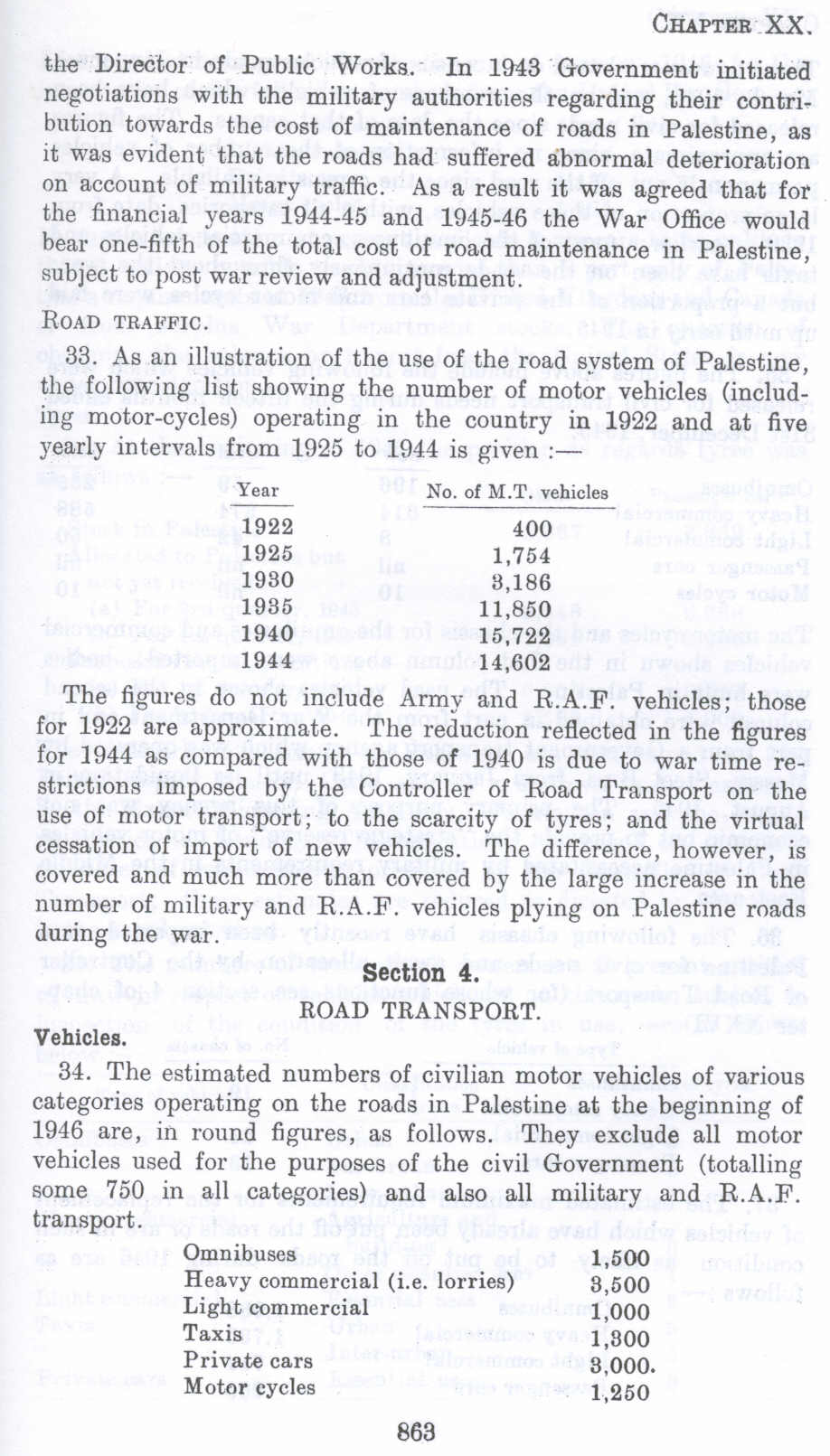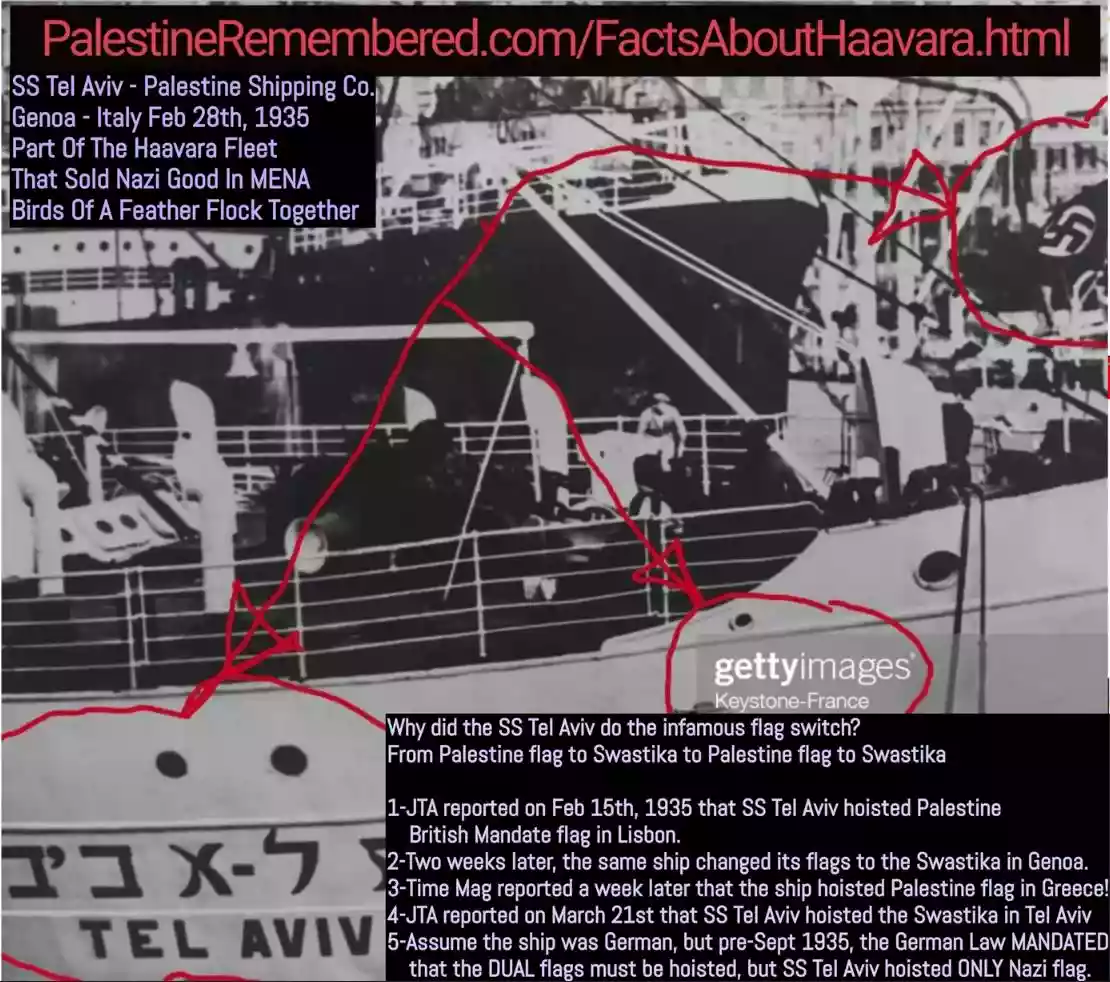| Prev | Next |  |
| Prev | Next |
| PalestineRemembered | About Us | Oral History | العربية | |
| Pictures | Zionist FAQs | Haavara | Maps | |
| Search |
| Camps |
| Districts |
| Acre |
| Baysan |
| Beersheba |
| Bethlehem |
| Gaza |
| Haifa |
| Hebron |
| Jaffa |
| Jericho |
| Jerusalem |
| Jinin |
| Nablus |
| Nazareth |
| Ramallah |
| al-Ramla |
| Safad |
| Tiberias |
| Tulkarm |
| Donate |
| Contact |
| Profile |
| Videos |
Road Transport in Palestine before 1948 (Nakba), British Mandate: A Survey of Palestine: Volume II - Page 863. Chapter XX: Communication : Section 3: Section 4 |
Disclaimer
The above documents, article, interviews, movies, podcasts, or stories reflects solely the research and opinions of its authors. PalestineRemembered.com makes its best effort to validate its contents.


Post Your Comment
*It should be NOTED that your email address won't be shared, and all communications between members will be routed via the website's mail server.
the Director of Public Works.• In 1943 Government initiated negotiations with the military authorities regarding their contribution towards the cost of maintenance of roads in Palestine, as it was evident that the roads had suffered abnormal deterioration on account of military traffic. As a result it was agreed that for the financial years 1944-45 and 1945-46 the War Office would bear one-fifth of the total cost of road maintenance in Palestine, subject to post war review and adjustment.
ROAD TRAFFIC
33. As an illustration of the use of the road system of Palestine, the following list showing the number of motor vehicles (including motor-cycles) operating in the country in 1922 and at five yearly intervals from 1925 to 1944 is given :-
Year
No. of M.T. vehicles
1922 1925 1930 1935 1940 1944
400 1.754 3,186 11,850 15,722 14,602
The figures do not include Army and R.A.F. vehicles; those for 1922 are approximate. The reduction reflected in the figures for 1944 as compared with those of 1940 is due to war time restrictions imposed by the Controller of Road Transport on the use of motor transport; to the scarcity of tyres; and the virtual cessation of import of new vehicles. The difference, however, is covered and much more than covered by the large increase in the number of military and R.A.F. vehicles plying on Palestine roads during the war.
Section 4.
ROAD TRANSPORT.
Vehicles.
34. The estimated numbers of civilian motor vehicles of various categories operating on the roads in Palestine at the beginning of 1946 are, in round figures, as follows. They exclude all motor vehicles used for the purposes of the civil Government (totalling some 750 in all categories) and also all military and R.A.F. transport.
Omnibuses
Heavy commercial (i.e. lorries) Light commercial
Taxis
Private cars
Motor cycles
1,500 S,500 1,000 1,300 3,000 1,250
863